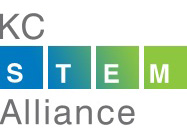A STEM mindset is a way of thinking and approaching the world. It’s about curiosity, problem-solving and a willingness to explore the unknown. With a STEM mindset, your child can become a confident explorer of the natural and technological wonders that surround them. Here are some ways you can help your child develop a positive STEM identity:
Be Curious Together: Explore the world around you with your child. Ask questions, investigate, and learn together. Show them that curiosity is a lifelong adventure.
Encourage Exploration: Provide access to STEM-related books, toys, and activities. Let your child explore their interests, whether it’s building robots, conducting experiments or stargazing.
Celebrate Mistakes: Teach your child that mistakes are part of the learning process. Embrace failures as opportunities for growth and innovation.
Real-World Applications: Show them how STEM is a part of everyday life. Cook together to explore chemistry, fix things to understand engineering, or explore nature to learn about biology.
Supportive Environment: Create a safe space where your child feels comfortable asking questions and seeking answers. Let them know you’re there to support their learning journey. Demonstrate this by showing how to answer questions with internet research, a visit to the library or by asking someone you know.
Demystify the Terminology: Don’t let stereotypes and acronyms dissuade your child’s interests! Explain the simple definition (science, technology, engineering, math) and share examples of ways they already use STEM in their daily lives. Talk about the ways STEM helps address big issues like clean water, transportation and healthcare.
Role Models: Introduce your child to STEM role models who inspire them. Highlight diverse figures in STEM who prove that anyone can make a meaningful contribution.





